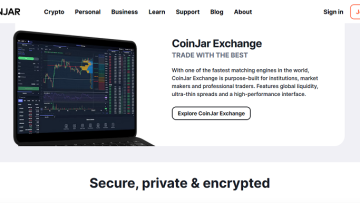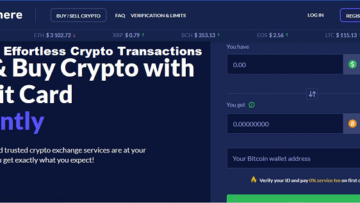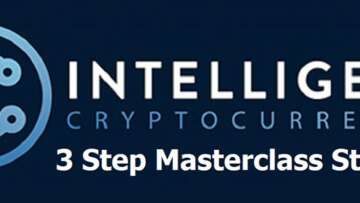HTX’s 6 Best Crypto Earn Methods: A Comprehensive Guide to Maximizing Your Passive Income
Discover HTX’s top 6 crypto earn methods: Flexible & Fixed, Shark Fin, ETH 2.0, Staking, Dual Investment & On-Chain Staking. Learn strategies to generate passive income safely.
The cryptocurrency market offers more than just trading volatility; it presents numerous opportunities to generate passive income. For users looking to grow their digital assets without constantly monitoring market charts, platforms like HTX (formerly Huobi) provide a suite of “Earn” products. These tools cater to various risk appetites and investment goals, allowing users to put their crypto holdings to work.
Understanding these options is key to making informed decisions. Whether you’re a cautious investor seeking stable returns or a seasoned trader comfortable with complex structured products, HTX Earn likely has something suitable. This guide delves into six primary methods offered by HTX: Flexible & Fixed terms, Shark Fin, ETH 2.0 Staking, general Staking, Dual Investment, and On-Chain Staking. We’ll explore how each works, its potential benefits, associated risks, and who might find it most appealing.
1. Flexible & Fixed Term Deposits: The Foundation of HTX Earn
For many users, particularly those new to crypto passive income or preferring lower-risk strategies, Flexible and Fixed term deposits are the ideal starting point. They function similarly to traditional savings accounts but with cryptocurrency.
Understanding Flexible Terms
- How it Works: With Flexible terms, you deposit your chosen cryptocurrency into an HTX Earn product. You earn interest on your deposit, calculated usually as an Annual Percentage Yield (APY). The key feature is “flexibility” – you can typically subscribe and redeem your assets at almost any time, often with funds returning to your spot account very quickly.
- Pros:
- High Liquidity: Easy access to your funds when needed.
- Simplicity: Very straightforward to understand and use.
- Lower Risk: Generally considered one of the lower-risk earning methods (though market risk of the underlying asset always exists).
- Variety of Assets: Often available for a wide range of popular cryptocurrencies.
- Cons:
- Lower Yields: The convenience of flexibility usually comes with lower APYs compared to fixed-term or more complex products.
- Variable Rates: APYs can fluctuate based on market conditions and platform demand.
- Ideal User: Beginners in crypto earning, users who prioritize liquidity, those needing short-term parking for their assets while still earning some yield, and risk-averse investors.
Understanding Fixed Terms
- How it Works: Fixed terms require you to lock up your cryptocurrency for a predetermined period (e.g., 7 days, 30 days, 90 days, or longer). In exchange for this commitment, HTX typically offers a higher APY compared to flexible options. Interest accrues during the lock-up period and is usually paid out, along with the principal, at maturity. Early redemption might be possible in some cases but often involves forfeiting accrued interest or paying a penalty.
- Pros:
- Higher Yields: Generally offers better returns than flexible terms due to the lock-up commitment.
- Predictable Returns: The APY is fixed for the duration of the term, providing certainty on the interest rate (though the fiat value can still fluctuate).
- Encourages Holding: Can be a good strategy for long-term holders (“HODLers”) who don’t plan on selling soon.
- Cons:
- Lack of Liquidity: Your funds are inaccessible for the duration of the term. This can be disadvantageous if the market moves significantly or you need funds unexpectedly.
- Opportunity Cost: Locking funds prevents you from using them for other trading or investment opportunities that might arise.
- Ideal User: Investors with a longer time horizon, users who are confident they won’t need immediate access to the locked funds, and those seeking higher, predictable yields than flexible options offer.
2. Shark Fin: Riding Price Waves for Enhanced Yields
Shark Fin products are more sophisticated structured derivatives offered under the HTX Earn umbrella. They appeal to users looking for potentially higher yields than simple fixed deposits, tied to the price performance of an underlying crypto asset.
How Shark Fin Works
- The Concept: Shark Fin products have a subscription period and an investment term. They offer a base APY, but the final yield depends on whether the price of the underlying asset (e.g., BTC or ETH) stays within a predetermined price range during the investment period.
- Payoff Structure:
- Price Stays Within Range: If the asset’s price remains within the specified range (e.g., $60,000 – $65,000 for BTC) throughout the term, the investor receives an enhanced APY, often significantly higher than the base rate. The payoff curve might resemble a shark’s dorsal fin, hence the name – rising as the price nears the upper boundary.
- Price Breaches Range: If the asset’s price touches or moves outside the predetermined range (either above the upper limit or below the lower limit) at any point during the term, the investor typically receives only the base (guaranteed) APY, which is usually lower but still positive.
- Variations: There can be bullish Shark Fins (betting the price won’t fall below a certain level and might rise modestly) and bearish Shark Fins (betting the price won’t rise above a certain level and might fall modestly). Principal is generally protected in the deposited currency (e.g., if you deposit USDT, you get USDT back plus yield).
- Pros:
- Potential for High Yields: Offers the chance to earn significantly more than standard fixed-term deposits if market conditions are right.
- Principal Protection (Usually): In most standard Shark Fin products, the initial investment principal (in the deposited currency) is protected.
- Capitalizes on Low Volatility: Performs best when the market is relatively stable or moves predictably within the defined range.
- Cons:
- Complexity: Requires a better understanding of market dynamics and derivatives than simple deposits.
- Capped Upside: You don’t fully benefit if the asset price skyrockets far beyond the upper range; you’ll likely just get the base APY.
- Yield Risk: The enhanced yield is not guaranteed; you might only receive the lower base APY if the price range is breached.
- Ideal User: Intermediate to experienced users, those with a specific view on short-term market volatility (expecting stability or range-bound movement), and investors seeking potentially higher yields while retaining principal protection in the base currency.
3. ETH 2.0 Staking: Participating in Ethereum’s Evolution
With Ethereum’s transition to a Proof-of-Stake (PoS) consensus mechanism (formerly known as ETH 2.0, now often referred to as the ‘Consensus Layer’), users can stake their ETH to help secure the network and earn rewards. HTX provides a streamlined way to participate without needing to run your own validator node.
How HTX Facilitates ETH Staking
- Lowering Barriers: Running a validator node independently requires 32 ETH and technical expertise. HTX allows users to stake smaller amounts of ETH.
- Liquidity Solution (BETH): When you stake ETH through HTX, you typically receive a tokenized representation of your staked ETH, often called BETH (Beacon ETH) or a similar derivative token. This BETH token represents your claim on the staked ETH plus accrued rewards. Crucially, BETH can often be traded on HTX’s spot market, providing liquidity that wouldn’t be available if you staked directly and locked your ETH.
- Reward Distribution: HTX collects the staking rewards from the Ethereum network and distributes them to users proportional to their staked amount, usually after deducting a service fee. Rewards are often distributed in the form of the staked asset derivative (e.g., BETH).
- Pros:
- Accessibility: Allows participation in ETH staking with smaller amounts than the 32 ETH requirement.
- Liquidity: The derivative token (e.g., BETH) provides a way to exit the staked position before the official Ethereum unlocking mechanism is fully available or utilized, albeit potentially at a market price different from 1:1 ETH.
- Ease of Use: Handles the technical complexities of running a validator node.
- Earn ETH Rewards: Generate passive income directly from supporting the Ethereum network.
- Cons:
- Derivative Risk: The value of the liquid staking token (e.g., BETH) might de-peg slightly from ETH due to market supply and demand or perceived risks. Selling BETH might result in getting less than 1 ETH back.
- Network Lock-up: While HTX provides liquidity via BETH, the underlying ETH is still locked according to the Ethereum protocol’s rules, which could be lengthy. Direct redemption of ETH for BETH might not always be available or instant.
- Slashing Risk (Mitigated): Validators can be penalized (“slashed”) for misbehavior or downtime, losing some staked ETH. While HTX aims to minimize this, it’s an inherent risk in PoS networks, though often absorbed by the platform.
- Platform Risk: Relying on HTX as an intermediary introduces counterparty risk.
- Ideal User: Long-term ETH holders who believe in the future of Ethereum, users seeking to earn yield on their ETH holdings, those who want to avoid the technicalities and cost of running their own validator, and users who value the liquidity option provided by the derivative token.
4. Staking (General PoS Coins): Earning Rewards Across Blockchains
Beyond ETH, numerous other cryptocurrencies utilize Proof-of-Stake (PoS) or variations like Delegated Proof-of-Stake (DPoS). HTX Earn often provides staking services for a variety of these assets.
How General Staking Works on HTX
- Platform as Delegator/Validator: HTX pools user funds for specific PoS coins and stakes them on the respective blockchains, acting either as a validator itself or delegating to trusted third-party validators.
- Simplified Process: Users simply choose the coin they wish to stake from the available options in HTX Earn, select an amount, and subscribe (often with flexible or fixed-term options similar to deposits).
- Reward Distribution: HTX receives staking rewards from the blockchain network (e.g., transaction fees, block rewards) and distributes them to users based on their staked contribution, typically after taking a commission.
- Supported Assets: This can include popular PoS coins like Cardano (ADA), Solana (SOL), Polkadot (DOT), Tezos (XTZ), Cosmos (ATOM), and many others, depending on what HTX supports at the time.
- Pros:
- Ease of Participation: No need to set up individual wallets or understand the specific staking procedures for each blockchain.
- Diversification: Allows earning staking rewards on a portfolio of different PoS assets through one platform.
- Potentially Attractive Yields: Some PoS coins offer competitive staking APYs.
- Flexible/Fixed Options: Often provides choices between locking funds for higher yields or maintaining flexibility.
- Cons:
- Lock-up Periods (Fixed): If choosing fixed terms, funds are illiquid.
- Variable APYs: Staking rewards on PoS networks can fluctuate based on network participation, inflation rates, and validator performance.
- Slashing Risk: As with ETH staking, validator penalties are a possibility, although often mitigated or absorbed by the platform.
- Platform Risk: Dependence on HTX to manage the staking process effectively and securely.
- Market Risk: The price of the staked PoS asset can decline, potentially outweighing the staking rewards earned.
- Ideal User: Holders of various PoS cryptocurrencies looking for a simple way to earn staking rewards, users comfortable with potential lock-up periods (if choosing fixed terms), and those wanting to leverage HTX’s infrastructure for staking.
5. Dual Investment: High Yield Potential with Price Speculation
Dual Investment is a more advanced, non-principal-protected structured product. It offers potentially very high yields but comes with significant risks tied to market price movements. It allows users to capitalize on their market predictions.
How Dual Investment Works
- The Premise: You deposit one cryptocurrency (e.g., BTC or USDT) and select a target price (strike price), an expiry date, and an APY. The product essentially involves selling options.
- Two Potential Outcomes at Expiry:
- If Market Price ≥ Target Price (“Sell High” Scenario): If you deposited BTC with a USDT target, and BTC’s price is at or above the target price at expiry, your BTC is sold at the target price, and you receive the proceeds plus the high yield, settled in the stablecoin (USDT).
- If Market Price < Target Price (“Buy Low” Scenario / “Sell High” Fails): If BTC’s price is below the target price at expiry, you keep your original deposited crypto (BTC in the “Sell High” example) and receive the high yield paid in that same crypto (BTC). Similarly, if you started with USDT aiming to “Buy Low” BTC, and the price ends up below the target, you buy BTC at the target price using your USDT, plus earn yield in USDT. If the price ends up above the target, you keep your USDT and earn the yield in USDT.
- Key Characteristics:
- Non-Principal Protected: The value of your holdings can decrease if the market moves against your chosen scenario (e.g., you end up buying an asset that continues to fall, or selling an asset that continues to rise). You always receive one of the two assets plus yield, but the value might be lower than if you had simply held.
- High APY: The advertised yield is typically much higher than standard savings or staking products to compensate for the risk.
- Short Terms: Often available for very short durations (e.g., 1 day, 3 days, 7 days).
- Pros:
- Potentially Very High Yields: Can offer some of the highest advertised APYs on the platform.
- Opportunities in Volatility: Allows users to potentially profit from expected price movements or stability.
- Buy Low / Sell High Strategy: Can be used systematically to accumulate a desired crypto when prices dip (“Buy Low”) or take profits when prices rise (“Sell High”).
- Cons:
- Significant Risk: Not principal-protected. You might end up buying an asset at a price higher than the current market price at expiry (if it dipped below target) or selling an asset lower than its potential peak (if it surged past target).
- Complexity: Requires a good understanding of options-like payoffs and market forecasting.
- Opportunity Cost: You might miss out on significant upside if you use a “Sell High” product and the price skyrockets far beyond the target.
- Ideal User: Experienced traders and investors comfortable with risk, users who have a strong directional view on short-term price movements, individuals looking to implement systematic buying or selling strategies, and those seeking very high potential yields who understand the associated risks. Not suitable for beginners or risk-averse users.
6. On-Chain Staking: Direct Blockchain Interaction via HTX
On-Chain Staking is distinct from the regular “Staking” products described earlier. While still facilitated through the HTX interface, it aims to provide a more direct interaction with the underlying blockchain’s native staking mechanisms.
How On-Chain Staking Differs
- Direct Delegation (Often): Instead of pooling funds entirely within HTX’s control, On-Chain Staking might involve HTX helping you delegate your stake directly to specific validators on the network using your HTX account. You might have more transparency about where your funds are staked.
- User Control (Potentially More): Depending on the implementation, users might have more direct control or visibility over their staked assets compared to centralized platform staking pools. However, the keys are still typically managed within the HTX ecosystem for ease of use.
- On-Chain Rewards: Rewards are generated directly from the blockchain protocol and passed through to the user, potentially with less intermediation or different fee structures than standard platform staking.
- Gas Fees Consideration: Since it interacts more directly with the blockchain, there might be network transaction fees (gas fees) associated with subscribing or redeeming, which isn’t usually the case with centralized staking products.
- Pros:
- Transparency: Potentially greater visibility into the staking process and validator performance.
- Direct Participation: Feels closer to participating directly in the network’s consensus.
- Potentially Different Reward Structures: APYs or fee structures might differ from standard platform staking.
- Cons:
- Complexity: May involve slightly more complex steps or considerations (like gas fees).
- Gas Fees: Network transaction costs can eat into returns, especially for smaller amounts.
- Still Platform Dependent: While more “on-chain,” you are still relying on HTX’s interface and infrastructure to facilitate the process. It’s not the same as staking from your own non-custodial wallet.
- Validator Selection: You might have less choice or rely on HTX’s pre-vetted list of validators.
- Ideal User: Users who prefer more transparency in the staking process, those comfortable with potential gas fees, individuals interested in the specific nuances of on-chain delegation mechanisms, and users seeking alternatives to HTX’s standard pooled staking products.
Choosing the Right HTX Earn Method
Selecting the best method depends heavily on your individual circumstances:
- Risk Tolerance: Low (Flexible/Fixed) -> Moderate (Staking, ETH 2.0, Shark Fin) -> High (Dual Investment).
- Time Horizon: Short-term/Need Liquidity (Flexible) -> Medium-term/Okay with Lock-ups (Fixed, Staking, ETH 2.0) -> Very Short-term Speculation (Dual Investment).
- Market Outlook: Stable/Range-bound (Shark Fin) -> Bullish/Bearish (Dual Investment) -> General Holding (Flexible/Fixed, Staking).
- Complexity Comfort: Low (Flexible/Fixed) -> Medium (Staking, ETH 2.0) -> High (Shark Fin, On-Chain Staking, Dual Investment).
- Desired Asset: Check which products support the specific cryptocurrency you hold or want to earn yield on.
How to Get Started with HTX Earn
- Create & Secure Account: Sign up for an HTX account and enable security measures like 2FA.
- Deposit Funds: Deposit the cryptocurrency you wish to use into your HTX Spot Account.
- Navigate to HTX Earn: Find the “Earn” or “Staking” section on the HTX website or app.
- Browse Products: Explore the different categories (Flexible, Fixed, Staking, Structured Products like Shark Fin/Dual Investment).
- Select Product & Asset: Choose the specific product (e.g., “USDT Fixed 30 Days,” “ETH 2.0 Staking,” “BTC Shark Fin”) and the asset you want to subscribe with.
- Review Terms: Carefully read the APY, duration, rules, risks, and redemption policies. Understand how yield is calculated and distributed.
- Subscribe: Enter the amount you wish to invest and confirm the subscription.
- Monitor: Keep track of your earnings and maturity dates through the HTX Earn dashboard.
Important Risks and Considerations
While HTX Earn offers attractive opportunities, it’s crucial to remember:
- Market Risk: The value of your underlying cryptocurrency can fluctuate significantly, potentially leading to losses that outweigh any yield earned.
- Platform Risk: You are entrusting your assets to HTX. While a major exchange, counterparty risk (exchange hacks, insolvency, regulatory issues) always exists.
- Smart Contract Risk: Some products, especially DeFi-linked or complex structured ones, may rely on smart contracts which can have vulnerabilities.
- Liquidity Risk: Locked funds in Fixed terms, Staking, or ETH 2.0 (underlying ETH) cannot be accessed immediately. Derivative tokens like BETH might trade below the underlying asset’s value.
- APYs are Not Guaranteed (Mostly): Except for fixed rates on specific products, APYs can change based on market conditions. Advertised APYs are often annualized estimates and not guarantees of future returns.
- Complexity Risk: Misunderstanding products like Shark Fin or Dual Investment can lead to unexpected outcomes.
- Do Your Own Research (DYOR): Never invest more than you can afford to lose. Thoroughly understand each product before committing funds.
Frequently Asked Questions (FAQ)
Q1: What is HTX Earn?
A1: HTX Earn is a suite of financial products offered by the HTX cryptocurrency exchange that allows users to earn passive income on their digital assets through various methods like savings deposits (Flexible & Fixed), staking (ETH 2.0, other PoS coins, On-Chain), and structured products (Shark Fin, Dual Investment).
Q2: Is earning crypto on HTX safe?
A2: While HTX is a major global exchange with security measures, earning crypto always involves risks. These include market volatility risk (asset price changes), platform risk (counterparty risk associated with the exchange), smart contract risk (for some products), and liquidity risk (if funds are locked). No crypto investment or earning method is entirely risk-free.
Q3: Which HTX Earn method offers the highest returns?
A3: Typically, products like Dual Investment offer the highest potential APYs, but they also carry the highest risk, including the risk of non-principal protection (value decrease). Shark Fin can offer high yields if market conditions are met. Fixed terms and staking generally offer better yields than Flexible terms but less than the riskier structured products. Returns vary greatly based on market conditions and the specific product.
Q4: Can I lose my money with HTX Earn?
A4: Yes. While some products like standard Shark Fin aim for principal protection in the deposited currency, the value of your principal can decrease due to market fluctuations. In Dual Investment, you can end up with an asset whose value has dropped significantly. Even in simple Flexible/Fixed deposits, the underlying crypto asset can lose value. Yield earned might not always compensate for price drops.
Q5: What is the difference between regular Staking and ETH 2.0 Staking on HTX?
A5: ETH 2.0 Staking specifically refers to staking Ethereum for its Proof-of-Stake consensus layer, often involving the BETH liquidity token. Regular Staking refers to HTX facilitating the staking of various other Proof-of-Stake cryptocurrencies (like SOL, ADA, DOT), pooling user funds to participate in those networks’ staking mechanisms.
Q6: Do I need technical knowledge to use HTX Earn?
A6: For basic products like Flexible and Fixed terms or standard Staking, minimal technical knowledge is needed; the platform simplifies the process. For more complex products like Shark Fin, Dual Investment, or potentially On-Chain Staking, a better understanding of market dynamics, options-like payoffs, and blockchain concepts is highly recommended.
Q7: How often are rewards paid out?
A7: Payout frequency varies by product. Flexible term interest might accrue daily and be redeemable anytime. Fixed term interest might accrue daily but only be paid out at maturity. Staking rewards distribution schedules depend on the specific coin and HTX’s policy (could be daily, weekly, etc.). Dual Investment and Shark Fin yields are typically paid at the expiry of the term. Always check the specific product details.
Conclusion
HTX Earn provides a versatile platform for cryptocurrency holders to generate passive income. From the straightforwardness of Flexible and Fixed deposits to the complexity and high potential (and risk) of Dual Investment and Shark Fin, there are options tailored to diverse needs. ETH 2.0 Staking and general PoS Staking allow users to support blockchain networks while earning rewards, and On-Chain Staking offers a more direct interaction model.
The key to success with HTX Earn lies in understanding your own risk tolerance, investment goals, and time horizon, and then carefully selecting the products that align with them. Always prioritize understanding the mechanics and risks of each method before investing. By leveraging these tools thoughtfully, users can potentially enhance their crypto portfolio growth beyond simple holding.
HTX Alternatives
Key Features & Benefits of HTX
| Key Features | Benefits |
| 1. Wide Range of Assets | Access to trade hundreds of different cryptocurrencies, including major coins (BTC, ETH), altcoins, and stablecoins, allowing for diverse investment strategies. |
| 2. Multiple Trading Types | Offers various trading options like Spot trading, Margin trading, and Derivatives (Futures, Options) to cater to both beginner and advanced trading needs and risk appetites. |
| 3. High Liquidity | Ensures that buy and sell orders can be executed quickly and close to the desired price, minimizing slippage, especially for large trades. |
| 4. Robust Security | Implements strong security measures such as multi-factor authentication (2FA), cold storage for funds, and potentially an insurance fund to protect user assets and data. |
| 5. HTX Earn / Staking | Provides opportunities for users to earn passive income on their crypto holdings through staking, savings accounts, or other yield-generating products. |
| 6. Competitive Fee Structure | Often features tiered trading fees that decrease with higher trading volume or holding the platform’s native token (HT), reducing costs for active traders. |
| 7. Mobile App | Offers dedicated mobile applications (iOS & Android) allowing users to trade, manage their accounts, and monitor markets conveniently on the go. |
| 8. Global Accessibility & Support | Available to users in many countries with multilingual support and customer service channels (like chat, email, help center) to assist users worldwide. |





































Recent Comments